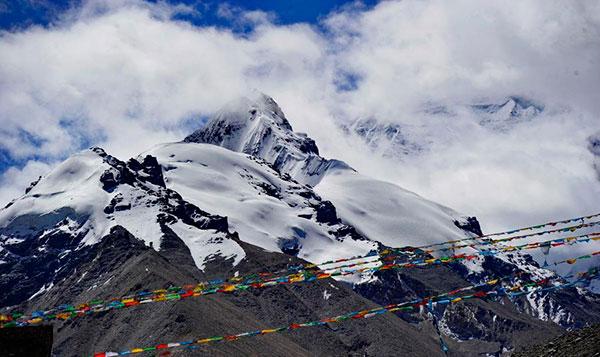Scientists set out on study trip to Mt Qomolangma

Photo shows the beautiful scenery of Mount Qomolangma. [Photo/Xinhua]
Chinese scientists have started a scientific expedition to the region of Mount Qomolangma, known as Mount Everest in the West, in Southwest China's Tibet autonomous region, as part of the second comprehensive scientific expedition to the Qinghai-Tibet Plateau.
A total of 170 scientists are conducting research on water, ecology and human activities, aiming to reveal the mechanism of environmental change and optimize the ecological security barrier system on the plateau.
Dubbed the "roof of the world "and the "water tower of Asia", the Qinghai-Tibet Plateau is an important ecological security barrier in China. It is also a natural laboratory for conducting research on the evolution of the Earth and life, the interaction among spheres and the relationship between man and Earth.
According to the law on ecological conservation on the Qinghai-Tibet Plateau, the State encourages and supports scientific investigation and research on the plateau, and promotes long-term research to grasp the ecological background of the plateau and its changes.
As an important part of the second comprehensive scientific expedition to the Qinghai-Tibet Plateau, which was initiated in 2017, the ongoing expedition is of great significance to studying the impact of climate and environmental change in the Qomolangma region on other parts of the world.
The 2023 Qomolangma expedition will continue to focus on major scientific issues such as how the extremely high altitude environment changes under the influence of global warming, how environmental change interacts with the westerly winds and monsoons, and how the environment will affect the changes of the "water tower of Asia", according to Yao Tandong, an academician at the Chinese Academy of Sciences and team leader of the expedition.
"The Qomolangma expedition has realized the transformation from'I want to conquer you' to 'I want to understand you', achieved the application of new technologies and new means, and resulted in important international influence," he said.
A series of scientific achievements including "the synergy and influence of westerly winds and monsoons", "the special physiological response of the human body in the Qomolangma region "and "the ecological process of the greening of the Qomolangma region" have been made so far during the second comprehensive scientific expedition to the Qinghai-Tibet Plateau.
